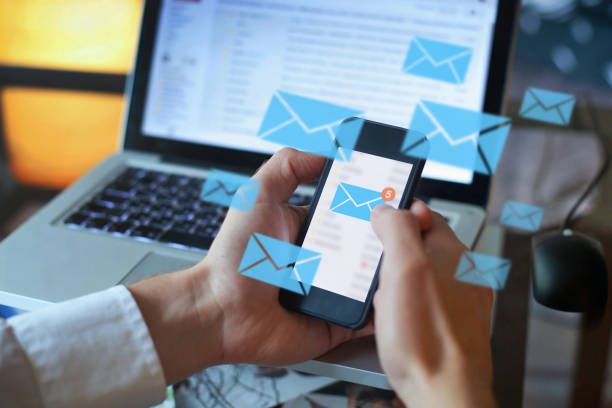Email has revolutionized communication, allowing us to connect with colleagues, friends, and businesses effortlessly. However, the sheer volume of emails we receive on a daily basis can quickly become overwhelming, impacting productivity and increasing stress levels. Finding the optimal balance between staying connected and avoiding email overload is crucial in maintaining a healthy and efficient digital lifestyle. In this comprehensive guide, we will delve into the concept of email volume, explore the effects of excessive email, provide strategies for managing email overload, and help you strike a balance that maximizes productivity and minimizes stress in the digital age.
Understanding the Effects of Excessive Email

- Decreased Productivity: Constantly checking and responding to emails can interrupt workflow and decrease productivity. Every time we shift our focus from tasks at hand to emails, it takes time and mental energy to regain our concentration and momentum.
- Increased Stress Levels: The influx of emails, especially when coupled with high expectations for prompt responses, can create significant stress. The feeling of constantly being "on call" and the fear of missing important information can take a toll on our well-being.
- Information Overload: Excessive email can lead to information overload, making it challenging to prioritize and process the most critical messages. This can result in important emails getting lost or overlooked amidst the flood of less significant ones.

Finding the Optimal Email Volume
- Reflect on Your Needs: Consider your personal and professional responsibilities, the nature of your work, and your communication preferences. Understanding your needs and priorities will help you establish a baseline for the volume of emails that is appropriate for you.
- Set Expectations: Communicate with colleagues, clients, and friends about your preferred email communication style. Let them know your response time expectations and encourage them to prioritize urgent matters or use alternative means of communication for time-sensitive issues.
- Establish Email Boundaries: Define specific times during the day when you dedicate uninterrupted focus to your work or personal tasks. During these periods, resist the temptation to constantly check your inbox, allowing yourself to concentrate on the task at hand.
- Utilize Filters and Folders: Take advantage of email features like filters and folders to categorize and organize incoming messages. This helps you prioritize and manage emails effectively, ensuring that important messages receive the attention they deserve.
- Unsubscribe and Manage Subscriptions: Review your subscriptions and newsletters regularly. Unsubscribe from those that no longer provide value or are no longer of interest. Consider using email management tools that consolidate subscriptions into a single digest or folder, reducing email clutter.
Strategies for Managing Email Overload

- Implement Email Batching: Instead of checking your inbox continuously, designate specific times during the day for email management. Process emails in batches, dedicating focused time to respond, organize, and delete messages.
- Use Email Filters and Rules: Create filters and rules to automatically categorize incoming emails based on sender, subject, or keywords. This ensures that important emails are highlighted, while less critical ones are organized for later review.
- Adopt Inbox Zero: The Inbox Zero approach emphasizes processing emails promptly and striving for an empty inbox. Respond, delete, archive, or delegate emails as soon as possible to maintain a clutter-free and manageable inbox.
- Consider Alternate Communication Channels: Not every communication requires an email. Evaluate whether certain conversations can be more efficiently conducted through instant messaging, video calls, or project management tools.
- Delegate and Collaborate: If appropriate, delegate email responses or tasks to team members or colleagues. Collaboration tools allow multiple people to access and respond to emails, reducing individual workload and enhancing efficiency.
Frequently Asked Questions
Q: How many work emails per day is considered excessive?
A: The number of work emails considered excessive varies depending on individual circumstances and work requirements. However, research suggests that receiving over 50 work-related emails per day can significantly impact productivity and well-being.
Q: How often should I check my email?
A: The frequency of checking email depends on your specific role and responsibilities. However, aim to strike a balance between staying informed and avoiding constant interruptions. Checking email at designated times, such as every hour or two, can help you maintain focus while staying connected.
Q: What if I receive a high volume of essential emails?
A: If you frequently receive a high volume of essential emails, consider implementing additional strategies to manage your inbox effectively. This may include prioritizing emails, utilizing advanced filtering options, and leveraging email management tools to streamline your workflow.
Q: Are there email management tools that can help reduce email overload?
A: Yes, numerous email management tools are available to help streamline your inbox and reduce email overload. These tools offer features such as email filtering, automatic sorting, snooze options, and productivity analytics to enhance your email management experience.
Conclusion
Achieving the optimal email volume is a delicate balance between staying connected and avoiding overload. By understanding the effects of excessive email, setting expectations, establishing boundaries, and implementing effective email management strategies, you can strike a balance that maximizes productivity, minimizes stress, and promotes a healthier digital lifestyle. Remember, email should be a tool that enhances communication, not a source of overwhelm. Take control of your inbox and regain control of your time and focus in the digital age.

